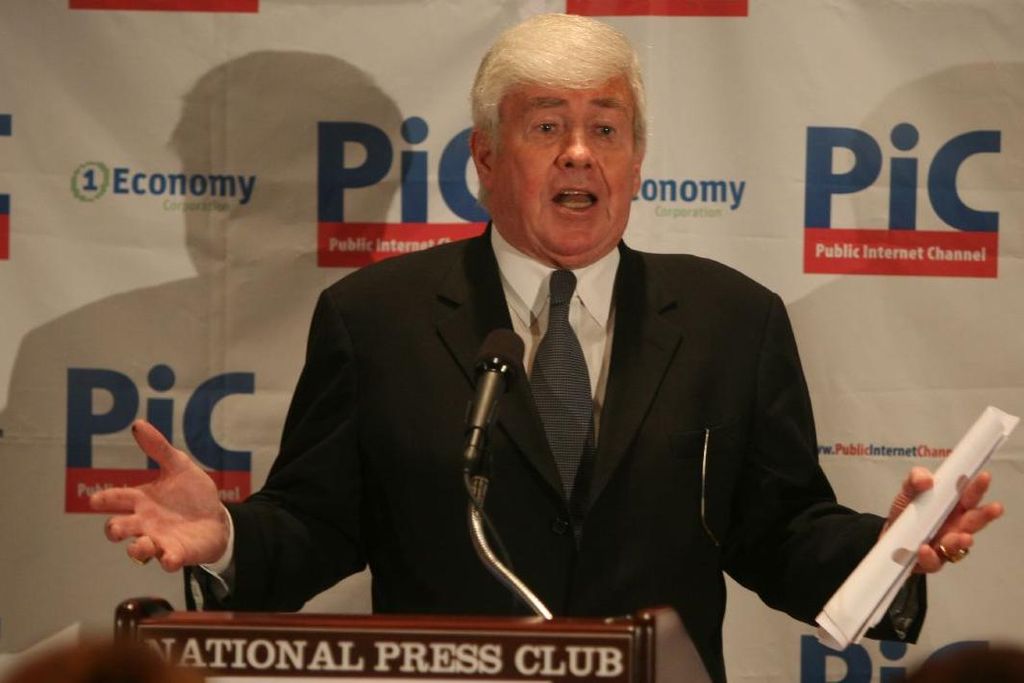View historical precious metals price charts »
View historical precious metals price charts »
- August 22, 2017 -
Many of you are very familiar with the late Jack Kemp (1935-2009) whether it’s from his several terms as a local Congressman or from his tenure as quarterback for the Buffalo Bills.
However, many of you precious metal followers, more specifically you “gold bugs,” are not aware of Mr. Kemp’s keen interest in the yellow metal.
Mr. Kemp was sometimes referred to as “Mr. Gold Standard” for his ideas on the need to anchor the U.S. Dollar to both an enduring and recognized symbol of value.

Former politician and Buffalo Bills quarterback Jack Kemp (1935-2009) was known as “Mr. Gold Standard” for championing the gold-based U.S. dollar. By Austin Bonner (flickr user a.bonner) [CC BY-SA 2.0], via Wikimedia Commons
Mr. Kemp hoped that by linking the U.S. Dollar to gold, the U.S. could establish a new position of world leadership. He felt a return to the gold standard would lay the groundwork for a restructured international financial community consistent with our values of economic freedom and personal responsibility.
Nations willing to accept a gold based currency would be effectively committing to free trade and economic opportunity based on a level playing field. No longer would fluctuations in fiat currencies undermine competition and free markets worldwide.
Congress is empowered through the Constitution to “regulate” the value of money. Notably, that power is explicitly granted in terms of authorizing the right to “coin” money, not print it.
The duty of Congress was to define the U.S. Dollar in terms of a specific weight of gold or silver. Thomas Jefferson proceeded to do so, writing in 1784: “If we determine that a Dollar shall be our monetary unit, we must then say with precision what a Dollar is.”
By 1792, the value of the Dollar was fixed through the Coinage Act at 371.25 grains of pure silver or 24.75 grains of pure gold.
Furthermore, Mr. Jefferson argued that it would be a violation of the Tenth Amendment to empower the government to issue “bills of credit” to be accepted as legal tender.
The need to provide a stable monetary foundation for domestic growth as well as forging an international monetary foundation devoted to free markets was the gold standard rationale often invoked by Mr. Kemp.
“Gold convertibility may not be fashionable,” he noted in remarks before the Atlanta Federal reserve in 1982, “but I am convinced that it is imperative, for the simple reason that if we do not remonetize gold, the international market could demonetize our dollar.”
Mr. Kemp had the foresight to comprehend that America’s leadership in the world should not be taken for granted. It requires us to adhere to core principles of integrity, which includes the reliability of our own monetary standard.
As Mr. Kemp affirmed in a 1988 presidential campaign speech, “I am a radical believer in the idea that the U.S. Dollar should be so honest, so sound, so trustworthy, so good, so predictable, so lasting in value, that it’s as good as gold.”
Championing the cause of the gold standard was more than good politics, though. It was a matter of commitment to the highest ideals of a nation dedicated to growth and opportunity.
From Mr. Kemp’s perspective, the dependability of the U.S. Dollar reflected the destiny of our country. He believed the U.S. Dollar should be as honorable and steadfast as the American idea itself.